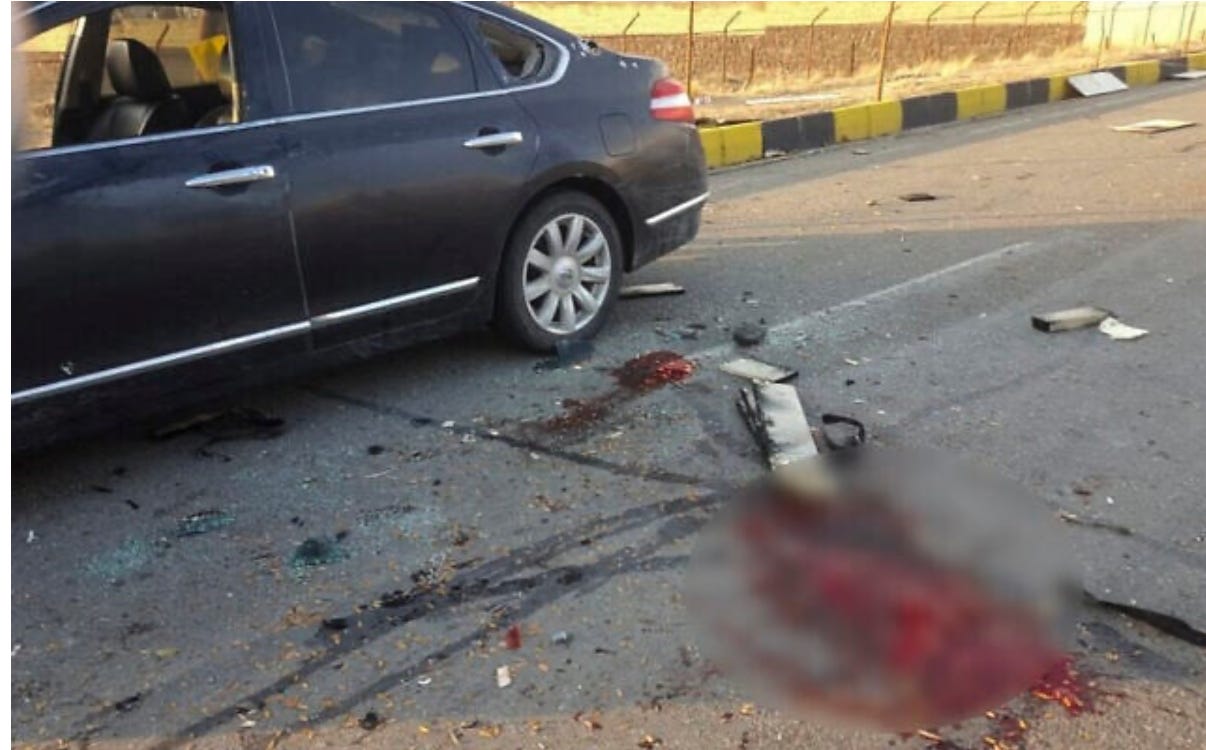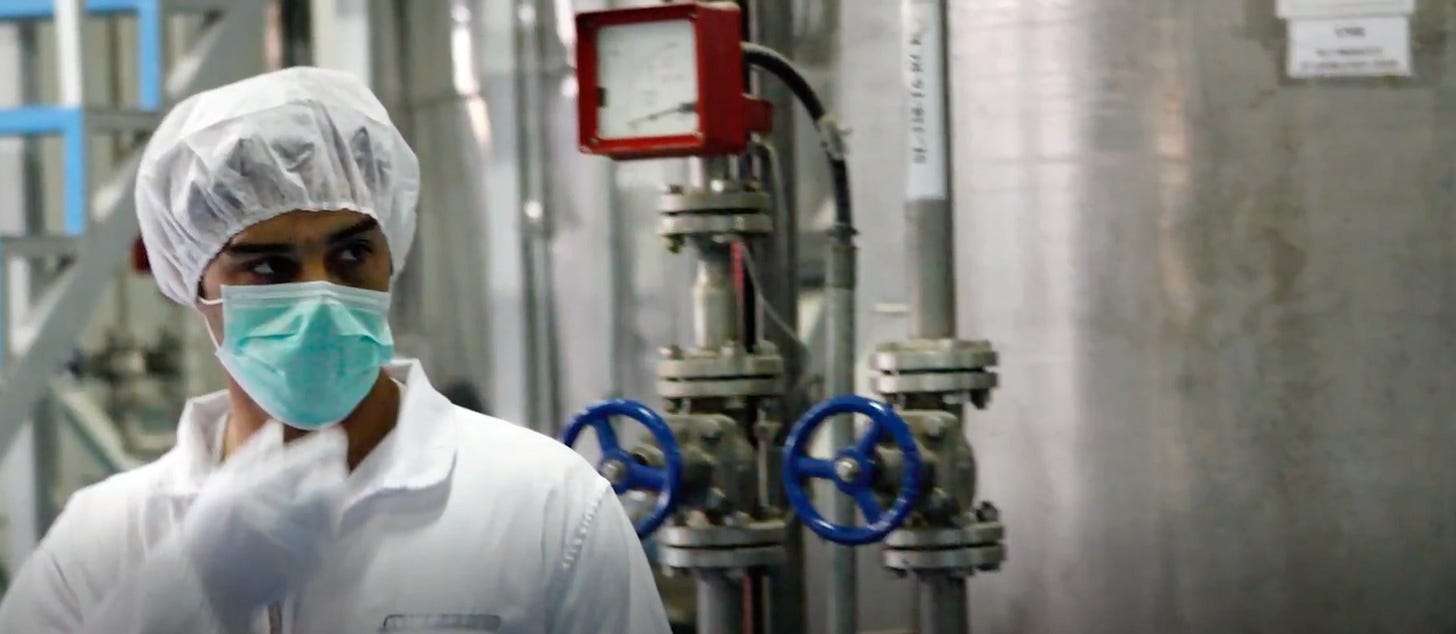The Secret Life of Mohsen Fakhrizadeh: Iran's Nuclear Genius
How Mohsen Fakhrizadeh’s secret nuclear program put Iran on a collision course with Israel, and made him the most-wanted scientist in the Middle East.
Mohsen Fakhrizadeh: “Remember that Name”
Mohsen Fakhrizadeh was a highly influential Iranian nuclear physicist and one of the most dangerous, enigmatic figures in modern geopolitics. Born in the early 1960s in a devout Shia family, Fakhrizadeh came of age during the 1979 Iranian Revolution. After the overthrow of the Imperial gover in Qom, Iran’s Imperial government and the establishment of the Islamic Republic, Fakhrizadeh joined the Islamic Revolutionary Guard Corps (IRGC). He quickly rose through the ranks, becoming a brigadier general and head of the Office of Defensive Innovation and Research. However, the development of Iran's nuclear program cannot solely be credited to him; his predecessor, Akbar Etemad, the father of Iran's nuclear efforts, was fundamental to its current geopolitical stability. Fakhrizadeh’s unique dual role as both senior military officer and academic intelligence merged Iran’s military and civilian nuclear research into one ticking time bomb. Making him a key player in Iran’s nuclear development across various government and civilian institutions.
Mastermind of Iran's Nuclear Program
Fakhrizadeh was regarded by Israeli intelligence agencies and the Western world as the mastermind behind Iran's decade-long creation of its nuclear program. Heading the “Amad” project, Iran’s alleged covert program, that produced the research for Iran’s modern-day nuclear program. Later, paving the way for the Organization of Defensive Innovation and Research (SPND), the merging of Iran’s nuclear program with military application was achieved. Israeli Prime Minister Benjamin Netanyahu repeatedly warned the Western world of Fakhrizadeh’s work. In a 2018 public statement, Netanyahu implored the world to global world to “remember the name,” highlighting Iran’s nuclear progression under the lead of Fakhrizadeh. In 2014, The New York Times stated that “Mohsen Fakhrizadeh is considered by Western Intelligence officials to be the closest thing Iran has to J. Robert Oppenheimer…”.
Stealth and Strategy
The real story of Fakhrizadeh lies in how he built Iran’s nuclear program to withstand not just economic sanctions, but to withstand military attacks. To achieve this, he developed an intricate network that was dispersed and concealed. Using Iranian universities, public fronts, to conceal their research and development of their nuclear program. Masking its true military objectives from Western geopolitical powers using hidden laboratories and civilian research teams located in Iranian universities. This method was a front. To covertly conduct undetectable research and development projects by Western geopolitical powers. Through the use of compartmentalized teams, he was able to disperse the programs into highly compartmentalized groups. Making his nuclear development harder to trace. It appears that an internal motivation of Fakhrizadeh, was his dedication to Iran’s Supreme Leader. Through combining both his passions for science and Iran’s political government, he was able to merge both politics and nuclear capabilities.
Father of Iran’s Nuclear Program
Iran’s nuclear ambitions did happen overnight. Akbar Etemad, the true founding “father” of Iran’s nuclear program and its foundations, which Fakhrizadeh would build off of. The program would allow Iran to create its own nuclear energy, as well as to evolve into a weapons project if Iran’s future security needs demanded. Between 1974-1978, Etemad built the internal structure for Iran's nuclear success, the grounds on which to expand Iran's nuclear power, if needed. Etemad’s mission, to use civilian power to make it possible to build nuclear weapons as well. Etemad's success led him to head the first Atomic Energy Organization of Iran. Paving the way for the creation of nuclear weapons. Prior to 1979, Etemad received a phone call from Shah Mohammad Reza Pahlavi. To devise a plan for this to work, the Shah and Etemad agreed: Provide Iran with future nuclear energy for a growing Iranian economy
Provide Iran with future nuclear energy for a growing Iranian economy
Leave the door open for the potential nuclear weapons capability if the region's security balance were to shift. Keep in mind, this was before the IRGC took over.
As Akbar Etemad recounted in a 2014 interview, the Sha’h’s vision was always two-pronged: energy for today, weapons for when the balance shifted.
Akbar Etemad recalls his conversation with the Shah that had initiated Iran's Nuclear program.
The idea was that, if today Iran can sell oil and has oil, it needs to invest that money, so that some of the oil would be left for future generations. Nuclear energy was a good way to invest because it takes 20 to 30 years to pay off. You start to invest in it, and then after that time, it starts to show results.
But ... I wasn’t sure if [the Shah] wanted energy only, or weapons too. So, I spoke to him and asked him what he wanted. I said: “I’ll explain everything to you, and at the end, you can tell me what you want.” ... For six months, I taught him everything from the atom to reactors and nuclear weapons. Then, after six months, I said, “Now that you know everything, what do you want me to do?” ... Then we spoke for two hours, about politics and the military. He said, “Today, we are a great regional power; we don’t need anything. But if the balance [of power] changes in the region, if other countries get nuclear weapons, we need to have the capability for it.” So, I said, “Would nuclear weapons be an option then?” He said, in English, I remember it exactly: “Why not?”
Unlike Akbar Etemad, Fakrizahdeh took the bull by the horns and forged Iran's Nuclear program to the next level. Fakrizahdeh took advantage of his political power. Something Etemad was not in the privileged position to do. Fakhrizadeh’s dual identity separated him from the work of Etemad, and Fakhrizadeh spread his wings and flew with the backing of the supreme leader. With his trust in the Supreme Leader, Fakhrizadeh was able to compartmentalize nuclear development, gaining access to international resources needed to build atomic bombs, under the shadows of military secrecy. Fakhrizadeh’s influence built redundancy, decentralization to create a survivable infrastructure for Iran's nuclear program.
With his trust in the Supreme Leader, Fakhrizadeh was able to compartmentalize nuclear development, gaining access to international resources needed to build atomic bombs, under the shadows of military secrecy. Fakhrizadeh’s influence built redundancy, decentralization to create a survivable infrastructure for Iran’s nuclear program.
Nuclear Secrets
Late 1980s: Nuclear weapon research was conducted at the Physics Research Center (PHRC), likely Iran’s main nuclear research facility.
Mohsen Fakhrizadeh Takes Control: By the early 2000s, Fakhrizadeh became the leader and coordinated the nuclear program.
The AMAD Project Foundation (1999-2003): Five nuclear weapons in the form of missiles were set to be built. The AMAD plan was shut done in 2003 due to international pressure.
“Green Salt Project” (2000-2003): Iran would mine lower-quality uranium to produce the metal necessary to produce nuclear weapons.
“Orchid Office” Management: The AMAD plan allegedly was run through this office (Iran denies it existed)
Organization of Defensive Innovation and Research (SPND): Founded by Fakhrizadeh, located near Malek Ashtar University in Tehran, near Mojeh. In order for Iran’s nuclear program to survive, it reorganized to hide its research and development from the Western world.
2010: Under Supreme Leader of the Islamic Republic Ali Khameni’s operations commenced, according to the Institute for Science and International Security, mediated the SPND, also known as SEPAND, to be a part of the Islamic Republic’s Ministry of Defense and Armed Forces Logistics, known as MODAFL.
Assassination: Advanced High-Tech Operation
Mohsen Fakhrizadeh was assassinated by Israel’s Mossad on November 27, 2020. Like a scene from a Hollywood script, his assignation was meticulously planned and carried out with precision. Using “a modified Belgian-made FN MAG machine gun attached to an advanced robotic apparatus and powered with artificial intelligence technology. The whole device weighed about a ton and was smuggled into Iran in small parts ahead of the operation and then reassembled”, according to the Times of Israel. “The Machine gun was mounted on a Nissan Pickup and ‘focused only on martyr Fakhrizadeh’s face in a way that his wire, despite being only 25 centimeters away, was not shot,” according to CBS News. According to multiple sources, his body was strewn with bullets, and his wife was left unharmed.

Reflections and Consequences
Who was the man whose killing required such resources and technology, one that the West felt it best that an assassination would slow Iran's nuclear program? In the aftermath of the COVID-19 crisis, Iran would not allow foreign shipments of the COVID-19 vaccinations into Iran. Instead, it claims to use nuclear facilities, or so it claims, to produce and utilize them for sterilization measures. Even naming one of Iran’s domestically developed vaccinations after Fakhrizadeh.
COVID Research Fueled Iran's Nuclear Program
Irans development of COVID-19 vaccines is seen by some analysts as a cover to channel resources towards its nuclear program. Projects administered by Iran’s government organizations offered opportunities to increase their nuclear budget through “health spending.” According to The Washington Institute, SPND’s funding rose more than fivefold from 2016 to 2021, both for public budget allocation and specific expenditures”. The budget increase was not the only element in question.
An example of the overlap can be found when examining the “Noora” vaccine. Developed at the Baqiyatallah University, and affiliated with the IRGC, and the Defense Ministry’s “Fakhra” vaccine, named after Fakhrizadeh. According to Iran Wire, “Noora Caccine, developed by Baqiyatallah University of Medical sciences, and affiliate of the IRGC,…followed the green lighting of Defense Ministry’s Fakhra Caccine, named after assassinated nuclear scientist Mohsen Fakhrizadeh.” FAKHRAVAC, developed by the SPND, and the CovIran-Barekat, developed by the Mossad, which was under the direct authority of the Supreme Leader Khamenei at the time.
Nuclear Facilities and COVID:
During the pandemic, Iranian authorities, including Ali Akbar Salehi, claimed “the agency is using gamma rays to disinfect masks, gloves and other medical equipment, and those gamma rays can only be produced in nuclear reactors,” according to DW. This acknowledgment, demonstrated by Iran’s Atomic Energy Organization, that Iran was running their nuclear facility, claiming they were being run to disinfect items needed during COVID.
Relic of the Past
Mohsen Fakhrizadeh’s name is no longer appearing in the headlines as an everyday household name. His fingerprint lingers on every centrifuge spinning deep within Iran’s underground facilities that the United States and Israel have left behind in their last bombing raid. His death did not put a stop to Iran’s nuclear ambitions; if anything, it reminded the world just how dangerous he was. Western intelligence and Israeli policymakers once warned to “remember his name”; far from a relic of the past, this warning continues to echo as Iran once again works to rebuild their nuclear program. Fakhrizadeh’s vision remains to cast a continued shadow on world peace and the expansion of Iran’s nuclear weapons program.




